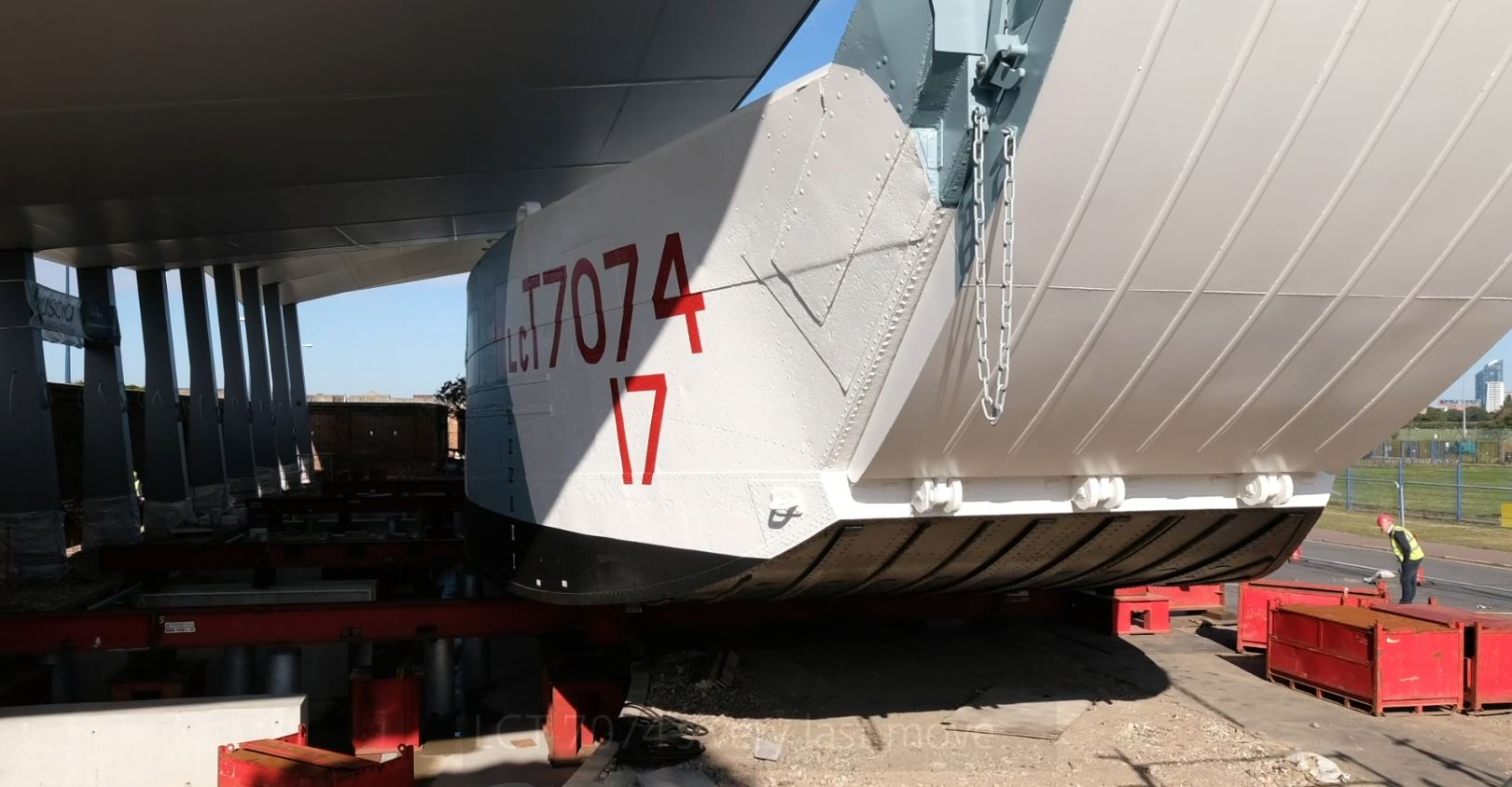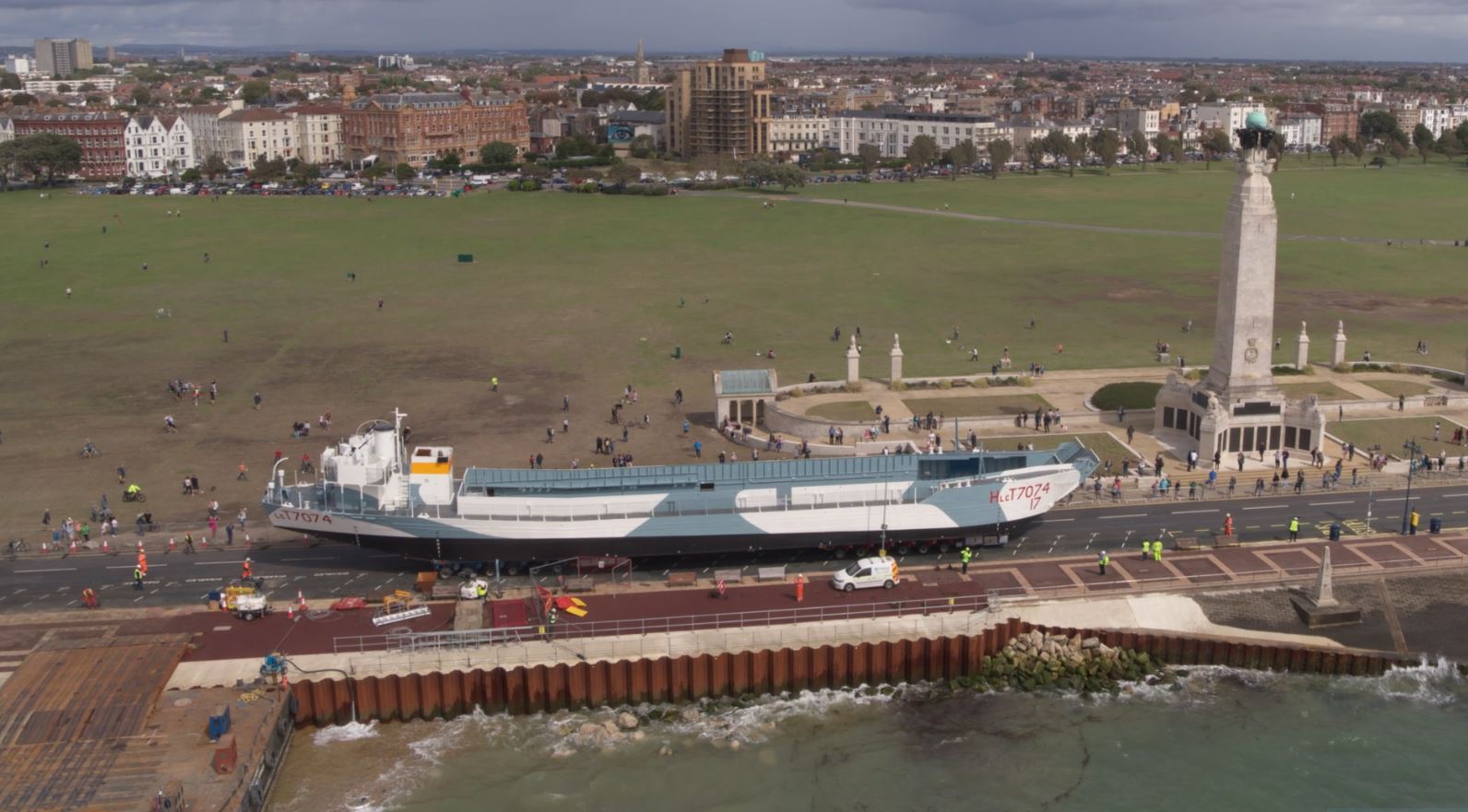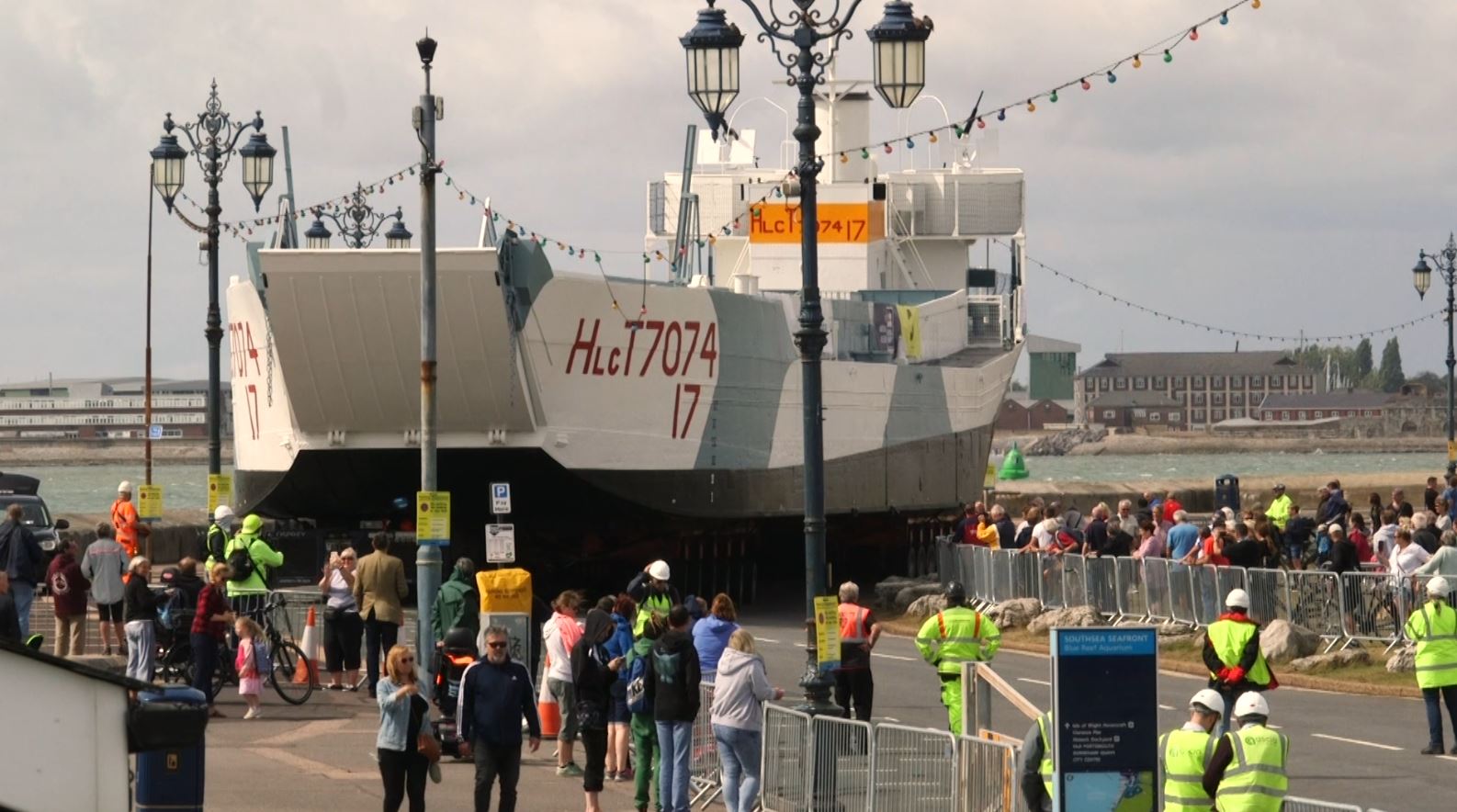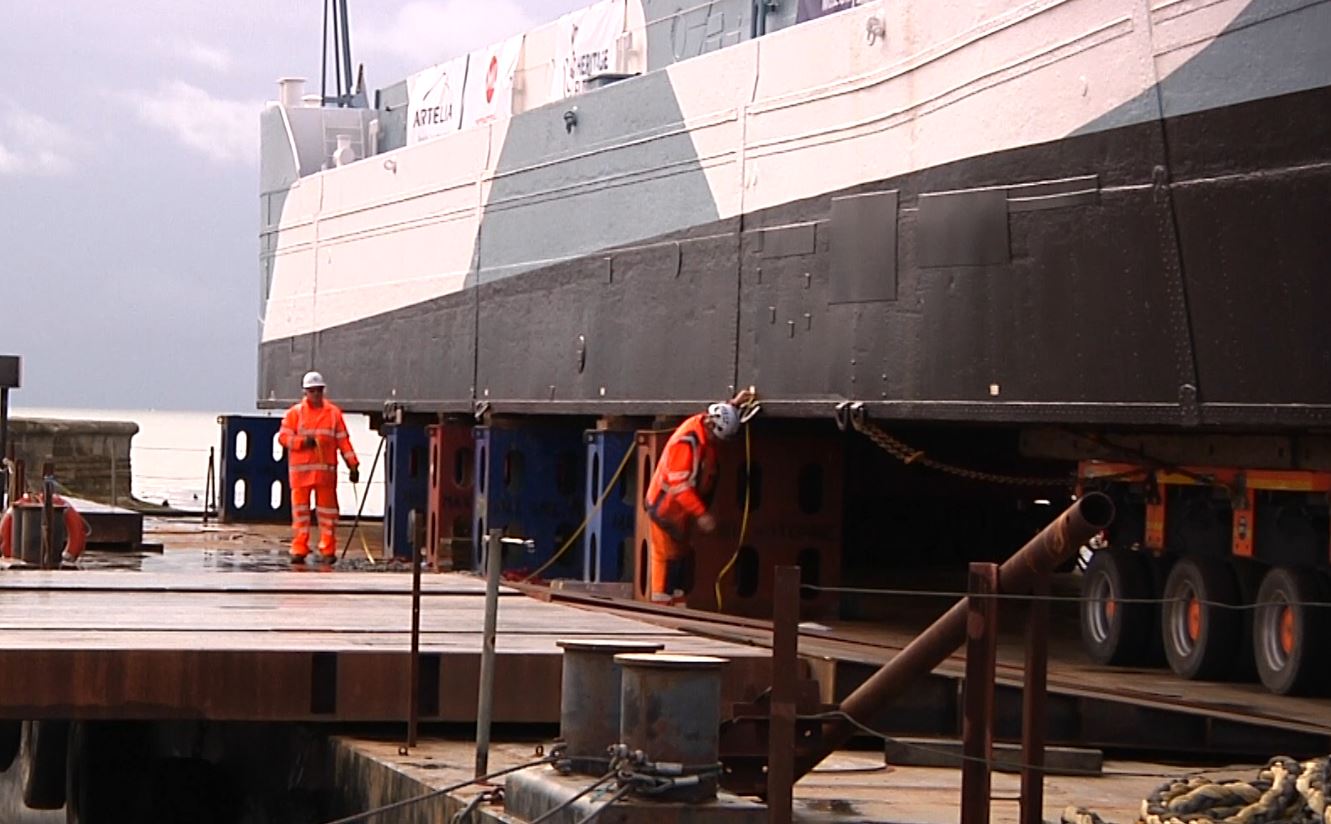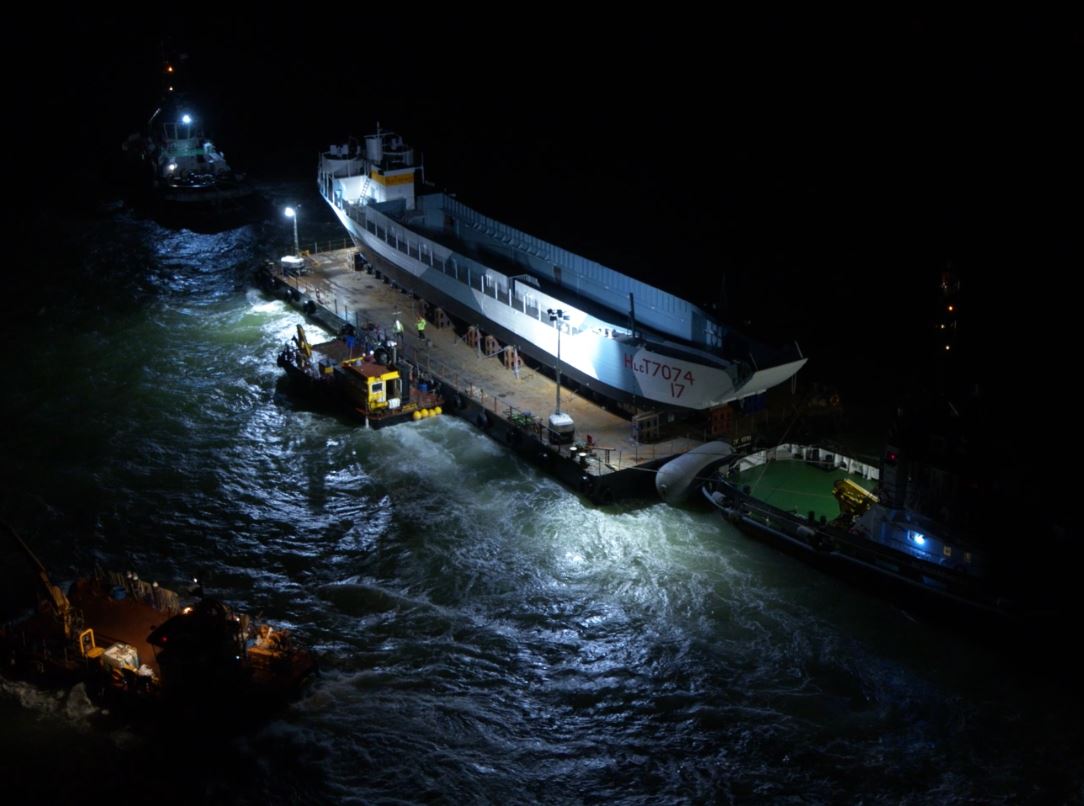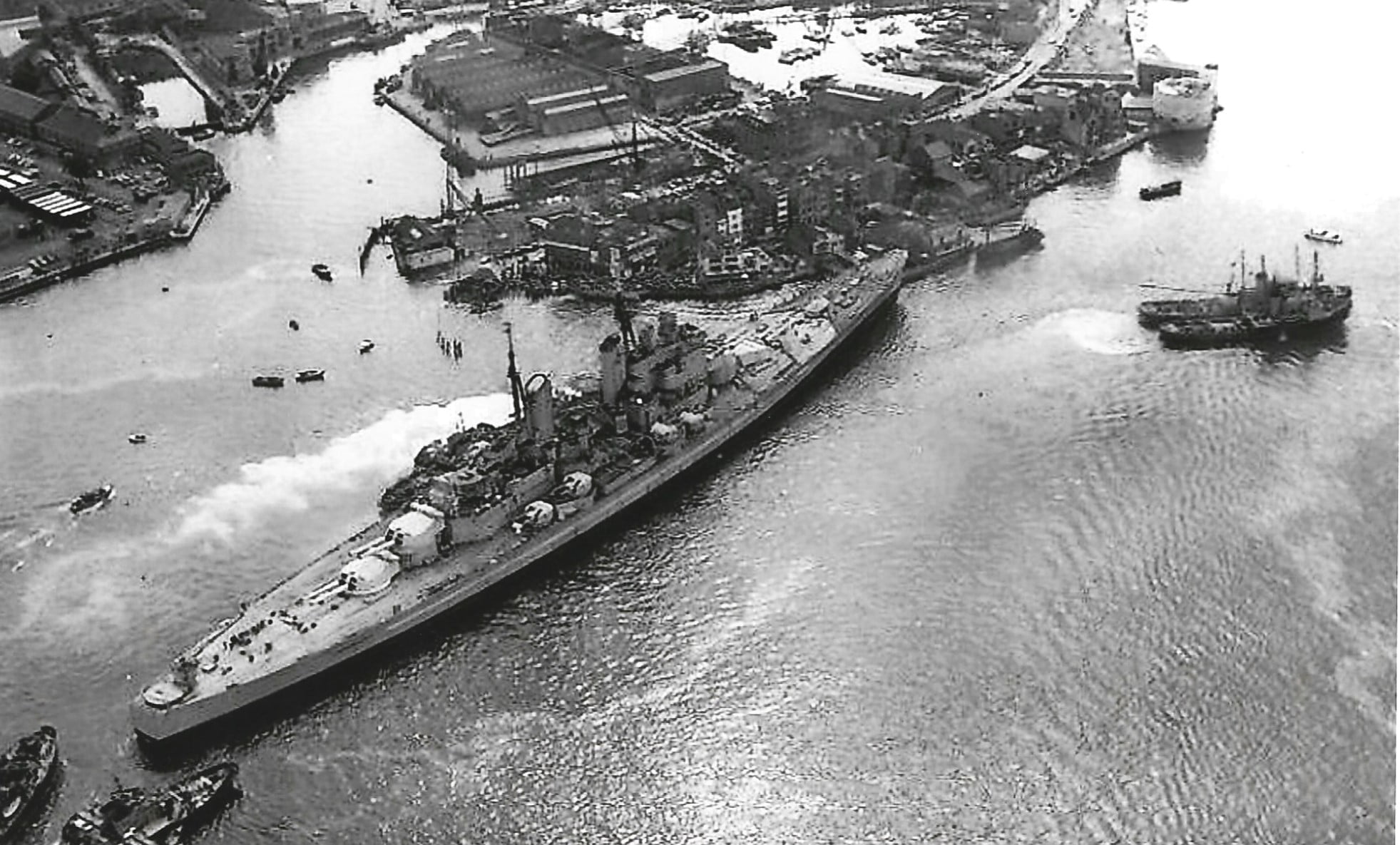Just as LCT 7074 had to land on sideways – juggling tide level and beach just right, to come to rest safely ready to slip onto Southsea’s Clarence Promenade in safety – so too on arrival at ‘D-Day Story’ did she have to move laterally into her new berth. Not so much a shuffle really – more a super-smooth slide. The distinguished 80-year old lady must have thought “This is some billet!”, all snug and tiddly (as sailors say) under the beautiful wave-form canopy over her – on its own a major new landmark for Southsea and the county of Hampshire beyond. Visible from afar, the canopy is already provoking “What the blazes is that?” reactions from visitors. And then more visits. One of the experts moving her so successfully put it this way: “This will be Southsea and Portsmouth’s London Eye!” Spot on.
DO THE D-DAY SHUFFLE
